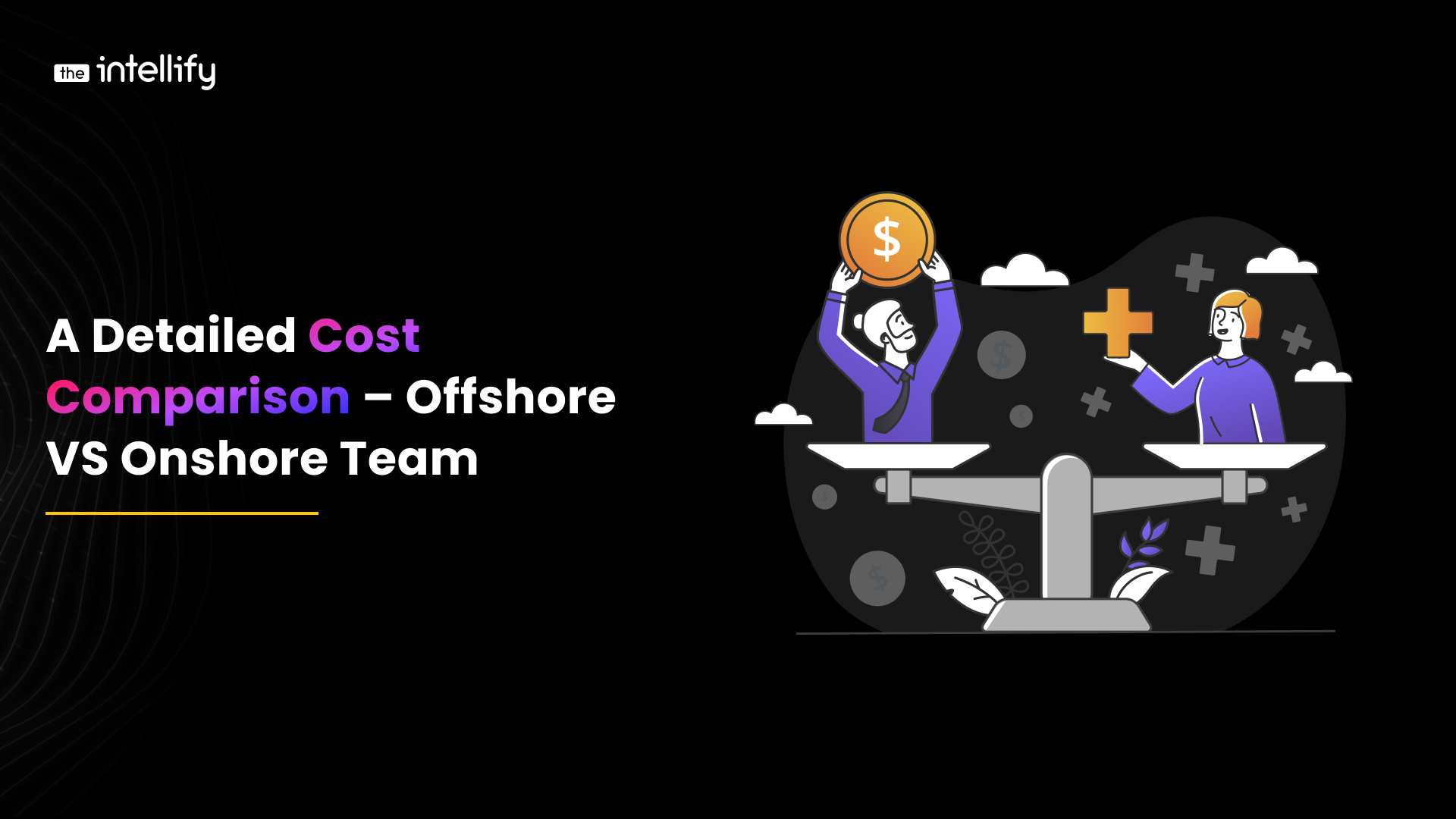
InsurTech, an integration of insurance and technology, is reforming how individuals use and buy insurance services. Insurtech is about optimizing insurance via technology to make it more accessible, effective, and customized.
The blog will discuss how InsurTech is used today and how to design insurance technology. It will also discuss the significance of InsurTech in fostering innovation within the insurance industry, enhancing client experiences, and modernizing insurance procedures.
The guide to Insurtech will help to grasp InsurTech for success in the dynamic insurance technology sector.
What is Insurtech?
“InsurTech” refers to the realm of insurance technology. The aim is to enhance insurance via the use of modern technologies. This involves making insurance more accessible to all people by using digital platforms, artificial intelligence, big data (the process of analyzing large amounts of data for patterns), machine learning and artificial intelligence.
InsurTech improves insurance businesses’ efficiency and makes it easier for clients to choose insurance that meets their specific requirements. It allows insurance businesses to be more adaptable and responsive to client needs and preferences. Along with more conventional insurance providers and government agencies, InsurTech is reshaping the insurance market to meet modern clients’ needs better.
What are the Different Types of Insurtech?
Insurance technology, or InsurTech, encompasses various tools developed to improve the insurance industry’s efficiency, accessibility, and customer service. Let’s take a look at a few of the most common InsurTech categories:
Online Marketplaces and Brokers
These businesses provide a variety of insurance products via their internet platforms. They streamline the process of comparing insurance products and buying them online. Digital brokers and platforms improve the consumer experience with personalized suggestions and interfaces.
P2P Insurance
P2P, or peer-to-peer insurance, is a system in which groups insure themselves against common risks by combining their premiums. Under this concept, unclaimed premiums may be reimbursed to members or given to charity, encouraging community engagement.
On-Demand Insurance
With this insurance, customers can get coverage for certain periods. It may be used for travel, electronic devices, or short-term events. To satiate the growing demands of its customers, it provides both ease and adaptability.
Telematics and UBI (Usage-Based Insurance)
Telematics and UBI systems may adjust insurance rates according to real use or behaviour with the help of sensors that check driving patterns or other pertinent indicators. One example is Root Insurance, which provides auto insurance policies based on the user’s driving habits as monitored by a smartphone app.
Micro-insurance
Microinsurance offers low-cost plans and coverage restrictions to low-income consumers or those requiring small-scale coverage. Insurance policies for health, life, and property exist in this form in developing countries. In developing economies, Bima offers a variety of microinsurance products.
Insurance Based on Blockchains
For efficiency, transparency, and fraud prevention, these InsurTech models use blockchain technology. Traditional claims procedures are rendered obsolete by smart contracts, which automate reimbursements upon fulfilling certain circumstances.
AI and ML
Businesses in the insurance technology sector that use AI and ML solutions seek to automate claims processing, personalize policies, automate underwriting, and use chatbots and predictive analytics to improve customer experience. One well-known example is Lemonade, which uses AI for several tasks, such as handling consumer questions and claims.
Cyber Insurance Technology
Cyber insurance is a niche product some InsurTech firms offer in response to growing cyber risks. They defend against cyber assaults, data breaches, and other forms of digital danger.
Why is Insurtech important?
Insurance firms rely on insurance to stay up with the digital world. It’s so important because:
Enhanced Customer Service
One of the impacts of insurtech is streamlining the insurance purchasing and claims processing processes. Thanks to advanced technologies like AI and machine learning, it can determine people’s risks and provide them with the appropriate insurance. Also, with the help of digital platforms offered by InsurTech firms, you can manage your policies and claims online, which makes the whole process more customized and hassle-free.
Saving Money and Time
Due to InsurTech, insurance firms may save time and money by streamlining their operations. InsurTech streamlines processes like underwriting and claims processing through automation, resulting in significant time and cost savings.
Effective Data-Based Decision-Making
Insurance firms may enjoy InsurTech’s use of cutting-edge tech and data analysis to make quicker, better judgments. Businesses can address issues and prevent hazards by identifying trouble spots, resulting in improved efficiency and satisfied consumers.
Innovative Insurance Ideas
With the help of InsurTech, insurance businesses can generate new concepts for insurance products. Insurance companies can also expect their clients’ requirements and wants by using smart tools and bespoke software.
Preventing Fraud and Ensuring Fairness
Finding fraudulent activity and ensuring fairness are two areas where InsurTech excels. Smart algorithms enable real-time fraud detection and guarantee proper claim handling free from shadiness.
Expanding Insurance Coverage
With the help of insurtech, insurance is becoming more accessible to more people than ever. To assist individuals in remote areas or without easy access to insurance in remaining covered from unforeseen events, InsurTech businesses are reaching out to them using digital platforms and mobile phones.
What are the Major Technologies in Insurtech?
Several important technologies are revolutionizing the insurance sector and fueling innovation in InsurTech.
ML and AI
Insurtech firms can gather and test customer data more with the help of smart automation technologies, which are made possible by artificial intelligence and machine learning.
Chatbots and Conversational AI
With the help of chatbots powered by conversational AI and NLP, insurance businesses can engage with clients more. These bots’ quick handling of consumer questions and claims processing enhance the company’s productivity and customer happiness.
IoT
Insurance firms may enjoy the data generated by the Internet of Things (IoT), which links smart devices. Information like this improves risk management and consumer experiences by facilitating data-driven choices and better solutions.
Blockchain
Smart contracts, a subset of blockchain technology, streamline the contracting process, eliminate human error in executing contracts, and reduce insurance fraud. In insurance procedures, this improves openness, safety, and effectiveness.
How does Insurtech Affect Specific Insurance Processes?
The advent of insurtech has improved the efficiency of insurance operations, particularly in policy administration and claims processing. Continuous improvements increase its usefulness in the insurance sector, where it streamlines operations for the benefit of policyholders and providers together. Some of the use cases of insurtech are:
Automated Underwriting
Automated underwriting completely revamps the conventional underwriting process by using technology, data analytics, and algorithms to test insurance applications without human involvement. This method is good for both insurers and clients in several ways:
Risk Analysis via Data
InsurTech companies conduct in-depth analyses of client data utilizing big data and sophisticated analytics. This allows insurance companies to assess risks more, allowing for more personalized insurance policies.
Automation of Underwriting Workflows
Data collecting, risk assessment, policy creation, and workflow optimization are a few of the underwriting processes that may be automated with the help of InsurTech solutions. This automation streamlines procedures, making decisions more quickly and efficiently.
Using Fintech Solutions
InsurTech firms integrate fintech technology to streamline the underwriting process. One example of a fintech solution that streamlines the underwriting process and makes it easier for consumers is quick policy issuance, online insurance marketplaces, and automated quotes.
Claim Management
Data analytics, digital platforms, predictive modelling, and automation are some of how insurtech improves claims management. Insurers may use these solutions to streamline claim processing, save costs, increase accuracy, and provide a better experience for customers.
Explore How it’s Changing the Way Claims are Handled
AI-Enabled Claims Evaluation
To swiftly determine the severity of a claim and allocate it to the appropriate claims adjuster, InsurTech employs AI algorithms. This allows insurance companies to react quickly and process claims more effectively.
ML for Fraud Detection
InsurTech uses machine learning to detect anomalies and trends in claims data that may indicate fraudulent activity. By discovering fraud early, insurance companies may save money and make the claims process easier for honest consumers.
Claims Workflow Automation
InsurTech businesses automate the process from when a claim is submitted until it is resolved. As a result, the process is streamlined, claims are processed, and human error is reduced.
Contract Performance
Manual signatures, lengthy processing delays, and excessive paperwork have long hindered the insurance industry’s ability to execute contracts. But with the help of these technologies, InsurTech businesses are making this process easier:
Blockchain Technology
These contracts automate and enforce settlements, terms, and conditions using blockchain technology. Smart contracts automate the execution of transactions based on predefined rules and circumstances encoded into the blockchain. This streamlines the contract execution process by eliminating intermediaries and manual interventions, reducing administrative expenses.
Blockchain-Enabled Transparency
Blockchain technology guarantees safe, transparent, and tamper-proof insurance transactions by producing immutable records of insurance contracts. This openness improves data privacy, integrity, and trust between contracting parties. Furthermore, by creating a shared ledger available to all parties involved, blockchain ensures that all parties are working from the same set of information, which helps with smooth communication and decreasing disagreements.
Document Automation
Through automation, InsurTech simplifies policy issuing, documentation, and maintenance. InsurTech’s digital and automated document generation, storage, and retrieval operations render all paper documentation and signatures obsolete. This streamlines the contract execution process and eliminates human mistakes with data entry and processing.
Using Analytics to Forecast Risk
Using sophisticated data analytics in insurance technology has made predictive analytics a game-changer when optimizing insurance operations via risk mitigation and forecasting. To manage risk, InsurTech uses predictive analytics in the following ways:
Personalized Solutions for Risk Management
Insurance technology firms use predictive analytics to create policyholder-specific risk management programs. To ensure that insurance policies are customized to each policyholder’s unique requirements and risk profiles, InsurTech analyzes massive volumes of data about consumer behaviour, demographics, and prior insurance claims to evaluate and price risks.
24/7 Risk Monitoring
InsurTech allows insurers to track risks in real time and gain valuable insights to address dangers. It monitors data streams from the Internet of Things (IoT), sensors, and social media platforms to identify new hazards and take automatic measures to reduce or cut losses.
Redefining Risk Management
The inventive application of predictive analytics in InsurTech sets a new benchmark for insurance risk management. Adaptable, data-driven, and quick to react to shifting market dynamics, InsurTech’s use of state-of-the-art technology and sophisticated analytics is transforming conventional risk management processes.
Usage-Based Insurance
Usage-based insurance (UBI) is transforming the insurance market by using technology to customize rates to each driver’s risk and driving behaviour. Fewer accidents and claims may be attributed to UBI’s efforts to gather and analyze data on driving patterns, which in turn promote safer driving practices. UBI is anticipated to see a meteoric rise in popularity because of the increasing prevalence of the Internet of Things (IoT) and linked autos.
Thanks to the deluge of data generated by the proliferation of linked automobiles, insurance companies will be able to provide customers with tailored rates depending on their actual driving habits. This individualized approach makes the insurance process more efficient and successful, helping drivers practice safer behaviours and also helping insurers test and price risk more.
What are the Challenges to Insurtech?
Several obstacles hinder insurtech’s development and functioning. Here are some of the challenges:
Regulatory and Legal Restriction
Startups with fresh ideas may feel discouraged by the stringent rules that insurtech companies must adhere to when interacting with consumers (D2C). Insurtechs operating in various jurisdictions face legal challenges due to different laws in different countries.
Data Security
Customer privacy is of the utmost relevance in the insurance industry due to the growing significance of data. When protecting customers’ personal information, insurtech firms must follow all applicable laws and regulations.
Cybersecurity Risks
The potential for cyberattacks grows in proportion to the number of linked devices. The insurtech industry has to strengthen its cybersecurity protection against cyber assaults and data breaches.
AI Bias
Insurtech firms that use AI in their pricing models must guarantee that their algorithms are impartial and fair. Discriminatory pricing resulting from AI bias raises ethical and legal concerns.
Threat from Conventional Insurance Companies
Insurance firms that have been around for a while also make technological investments to serve their customers better. Gaining market share might be tough for insurtech startups because of competition from these well-established competitors.
Customers’ Changing Expectations
Customers rely on insurtech firms for specialized services and smooth digital experiences. Consistent innovation and financial investment in technology are essential to meet these expectations.
Conclusion
Through interconnected technology, platforms, and services, insurTech is revolutionizing the insurance industry. It helps developers and entrepreneurs create Mobile App Develoment Solutions by facilitating better cooperation and new ideas. The key to better customer service and insurance performance optimization is comprehending its inner workings. Analytics improves underwriting, machine learning adjusts to changes in the market, and algorithms examine data to find risk patterns. With the help of insurtech, insurance is undergoing a dramatic transformation, with more streamlined and customer-focused protocols.

Written By, Darshak Doshi
The CTO and Co-Founder of The Intellify. Darshak thrives on exploring innovative techniques and strategies. His insightful posts are a valuable resource for businesses seeking fresh development ideas.


How Much Does It Cost to Build a Healthcare App Like Patient Access?
Costs of Developing Healthcare Apps In the quickly changing landscape of digital healthcare, patient-centric apps like Patient Access have emerged as critical tools for improving patient care and expediting medical procedures. These apps let users arrange appointments, access their medical information, manage medications, and contact healthcare providers from the comfort of their own homes. The […]


A Detailed Cost Comparison Offshore VS Onshore Teams
Detailed Cost Comparison Offshore VS Onshore Teams The world is always changing due to globalization. The choice between offshore vs onshore outsourcing teams is crucial for companies. Thanks to globalization, which erases boundaries. Organizations can depend on a vast talent pool worldwide. This has led to offshore outsourcing. In it, a team from another country, […]


Real Estate Mobile App Development 101: All You Need to Know
Today, the real estate industry is improving with the help of new technology. Mobile applications are one of the major aspects of this shift. Real estate mobile app development has become crucial for such businesses, which must remain relevant. The applications benefit buyers, sellers, agents, and property managers. In the contemporary world, individuals desire convenience […]


Real Estate Mobile App Development 101: All You Need to Know
Today, the real estate industry is improving with the help of new technology. Mobile applications are one of the major aspects of this shift. Real estate mobile app development has become crucial for such businesses, which must remain relevant. The applications benefit buyers, sellers, agents, and property managers. In the contemporary world, individuals desire convenience […]


How Much Does It Cost to Build a Marketplace App Like Gumtree?
Detail Guide About Digital Marketplace like Gumtree The world is shifting online. Marketplace apps have emerged as major contenders. They bring buyers and sellers closer than ever. These platforms have cut the method of buying and selling. They have also fostered the market for both people and companies. Of all the marketplace apps, Gumtree is […]


Top 10 Healthcare Business Ideas to Boost Your Startup Success
Innovative Opportunities for Startups in Healthcare Startups find the healthcare sector promising. This is because demand for better and more accessible healthcare is growing. New technologies, like telemedicine and wearable health devices, create innovation opportunities. They also create chances for improvement in patient care. Blockchain technology can also enhance data security and streamline healthcare processes. […]

0
+0
+0
+0
+
Committed Delivery Leads To Client Satisfaction
Client Testimonials that keep our expert's spirits highly motivated to deliver extraordinary solutions.

Let’s start a Conversation about your Business Goals!
Drop us a line to Start a Project with us
Contacts For Business
Contacts For Career












